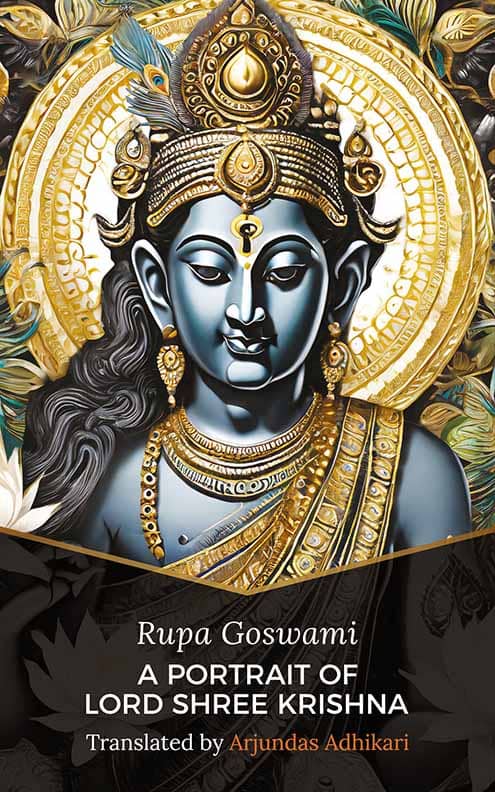
The word rupa in Sanskrit means beautiful, handsome or well-formed, and a cognate of rupa is the word rupaka, which means a thing that is imbued with sublime qualities, something as, for example, a beautifully composed drama. A drama that is not as well-crafted is called an uparupaka, or a secondary drama. That the name of the author of the excellent Sanskrit drama, Vidagdha Madhava (aka, A Portrait of Lord Shree Krishna, translated into English by Arjundas Adhikari) happens to be Rupa, considering the inherent beauty of the theme he’s chosen, and the aesthetic way he presents the beautiful theme, makes you wonder at how very appropriately the name matches the talent.
There is an established structure to the rupaka-type drama, and the themes explored in this form were varied, including political intrigues (as in Vishakhadatta’s Mudrarakshasa), philosophical allegories (Moharajaparajaya), romantic love (Malatimadhava), as well as divine love (Vidagdha Madhava). Rupa Goswami’s Vidagdha Madhava, aka, A Portrait of Lord Shree Krishna, explores divine love, viz. that between Radha and Krishna, using terms that may also be found, for instance, in a Sanskrit drama about an ordinary romance. For example, lotus eyes, petal feet, fragrant smiles, deer-like hearts, (goddess Rombhuru-like hips) and oblique glances abound in the famous Shakuntala, Bhavabhuti’s Malatimadhava as well as in Vidagdha Madhava. But in choosing a conventional drama-genre as the vehicle for his work, Rupa Goswami is nonetheless absolutely confident from the outset, that his writing will effect a very unique emotional response (rasa) in his audience, since the hero and heroine in it are divine.
Whilst the Vedas would have it that simply musing on the nature of the Divine for an extensive period of time won’t help you realise it, they still insist life’s purpose is to know about it. In this regard, the Sanskrit music-related term avaroha, meaning, going from a higher to a lower note, is used in describing the kind of path that leads to the Divine, a path whose whereabouts can’t be guessed, but rather, are supplied – an avaroha path, the Sanskrit compound word for which is avaroha-pantha, which means just that. Details about the path are found in the Vedas, and a Veda-professor (a guru) gives you these details in person, along with the proviso that said details transcend the usual way of perceiving things. All in all, this information is a serious matter for serious enquirers and there’s nothing sentimental about it. The Supreme Spirit known as para brahman in the Vedas, is Krishna, and liberation results from understanding what He’s about by familiarising oneself with a play like A Portrait of Lord Shree Krishna, authored by the the great guru of gurus in Shree Krishna’s line, Shrila Rupa Goswami.
Nota bene: facts about Shree Krishna should be comprehensively researched, because failing this there is a danger to characterise Him in a tastelessly mawkish fashion that has nothing to do with para brahman, or the Great Spirit, but everything to do with being cringeworthy.
Arjundas Adhikari

